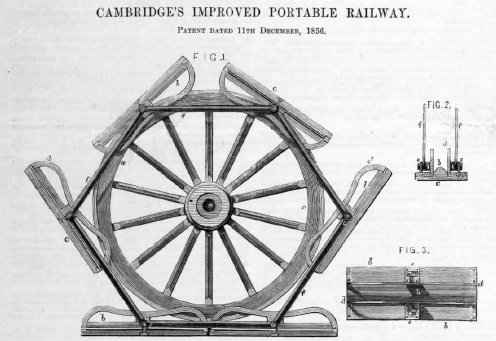July 1857: The portable railway
When it's not overcrowded and/or broken and doesn't cost the same price as a flight on Richard Branson's spaceship, UK rail travel is, occasionally, an enjoyable, relaxing, and romantic experience.

But it is still hamstrung by one glaring restriction that has dogged our railways since the golden age of steam — trains will only stop at stations, and most passengers have to find some other way of completing their journey. Readers will agree that in these sedentary days to ask anyone to walk anywhere is clearly unacceptable.
Fortunately, a quick scan of the Engineer archives provides a ready-made solution to rail's limitations: simply attach a rotating piece of railway track to each of your vehicle's wheels, and the romance of rail will follow you all the way to your front door.
READ OUR ARCHIVE COVERAGE OF THE PORTABLE RAILWAY
In its description of Cambridge's portable railway, the magazine outlines a design for 'portable or endless railways' that can be 'applied to the wheels of engines and carriages, for the purpose of facilitating their movement over loose ground and irregular surfaces.'
Register now to continue reading
Thanks for visiting The Engineer. You’ve now reached your monthly limit of premium content. Register for free to unlock unlimited access to all of our premium content, as well as the latest technology news, industry opinion and special reports.
Benefits of registering
-
In-depth insights and coverage of key emerging trends
-
Unrestricted access to special reports throughout the year
-
Daily technology news delivered straight to your inbox










Water Sector Talent Exodus Could Cripple The Sector
Maybe if things are essential for the running of a country and we want to pay a fair price we should be running these utilities on a not for profit...